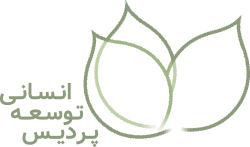
چگونه میتوانیم از علم آیندهپژوهی، برای ساختن آینده خود استفاده کنیم؟

You can find a lot of information on organizational learning by an easy searching on the Internet, but we in Human Development Paradise, make an overview on this by applying the most reliable references. The essay looks at this because we think talking about organizational learning is pivotal when we want to show how organizational function is under its effects.
In the era of changing organizational environment, it is critical for organizations to devote attempts to generate, achieve, transform, and employ obtained knowledge to have a better management of changes and competitions existed among organizations (DiBella, 2019). In this line, obtaining high-quality result is substantial for an organization functioning (Zerah Tan & Olaore, 2021) and preparing an enabling atmosphere that nurtures the learning culture, team learning, and collaborations shed lights highly on employees’ empowerment toward a collective vision (Watkins & Marsick, 2019)
The issue of organizational learning culture (OLC) refers to cumulative knowledge and mutual assistance shaped over a long period of time (Klein, 2016). One of its prominent features includes collaboration among staff addressed to enhance organizational activity, to develop a professional learning community, and to cause the learning culture a complete element of the organization’s overall strategy (Schechter, 2013). This approach has been welcomed by organizational leaders who make effort to increase employees’ engagement in decision-making such as more attachment to the work place and job commitment
Due to the effectiveness of the role of organizational learning in empowering an organization, scholars have devoted ample attention to this issue. In this vein, Beazley, Boenisch, and Harden (2003) describe two types of organizational learning, namely horizontal and vertical learning and numerate the contribution of each learning to an organization. While the horizontal pattern deals with the collaborative development of conceptions among employees performing simultaneously in different job positions, Knowledge Continuity Management (KCM), representing the vertical aspect of learning, focuses on the transfer of knowledge from the departing employee to his or her replacements, and leads to completing the horizontal aspect of knowledge sharing among coworkers. In particular, KCM is beneficial when an employee retires from or leaves a position and another employee is assigned to that position.
Using KCM process is aimed to facilitate the transfer of knowledge, to assist the new position holders to understand their activities, and to retain cumulative experience from those retiring positions to their successors. To gain a more desirable outcome of KCM, Beazley, Boenisch, and Harden (2003) divide the process of implementation into six steps:
making a KCM evaluation to identify the state of existing knowledge continuity
defining the aims and domain of the KCM program
setting management and coordinative accountability for performing the KCM program
designing KCM activities and provide a budget
designing methods to harvest, catalogue and transfer critical operational knowledge
pass on the knowledge as required
A body of research has shown that each learning has its own advantages. With regard to the effects of horizontal learning in educational setting, significant contributions have been documented; for example, development in students’ achievements, better sense of efficacy, teacher’s organizational citizenship behavior (OCB), and teacher’s organizational identity. On the other hand, these days, because organizations encounter higher employee mobility and fewer tenured employees, KCM has been used widely by organizational leaders. The types of knowledge transferred to new employee include formal and informal dimensions of a post, domains of responsibility, common problems intrinsic in the position and ways of managing them. Among the contributions of this type of learning, researchers have argued that new employees have more self-confidence, make more appropriate informed decisions, prove a better understanding of job demands in a shorter time and collaborate with agents related to the new post.
Organizational learning is a jargon used to narrate the process of transferring knowledge within an organization. The essay introduces two types of learning in organization and explains Knowledge Continuity Management (KCM), as a vertical aspect of learning. This may assist academic students and probably organization leaders to analyse the influence of organizational learning on organization functioning.
Klein, J (2016). Teacher empowerment, horizontal and vertical organizational learning, and positional mobility in schools. European Journal of Teacher Education, 39(2), 238-252. https://doi.org/10.1080/02619768.2015.1119118
Beazley, H., Boenisch, J., & Harden. D. (2003). Knowledge continuity: The new management function. Journal of Organizational Excellence, 22 (3), 65-81.
DiBella, A.J. (2019). From learning organizations to learning cultures and more: evolutions in theory, changes in practice, continuity of purpose. In A. R. Örtenblad (Ed.), The Oxford Handbook of the Learning Organization (pp. 215-228). Oxford University Press.
Zerah Tan, F., & Olaore, G. (2021). Effect of organizational learning and effectiveness on the operations, employees productivity and management performance. XIMB Journal of Management, 19(2), 110-127. https://doi.org/10.1108/XJM-09-2020-0122
Watkins, K.E. & Marsick, V.J. (2019). Conceptualizing an organization that learns. In A. R. Örtenblad (Ed.), The Oxford Handbook of the Learning Organization (pp. 51-66). Oxford University Press.
Schechter, C. (2013). Collective learning in schools: Exploring the perceptions of leadership trainees. International Journal of Educational Management, 27 (3), 273-291. https://doi.org/10.1108/09513541311306486

